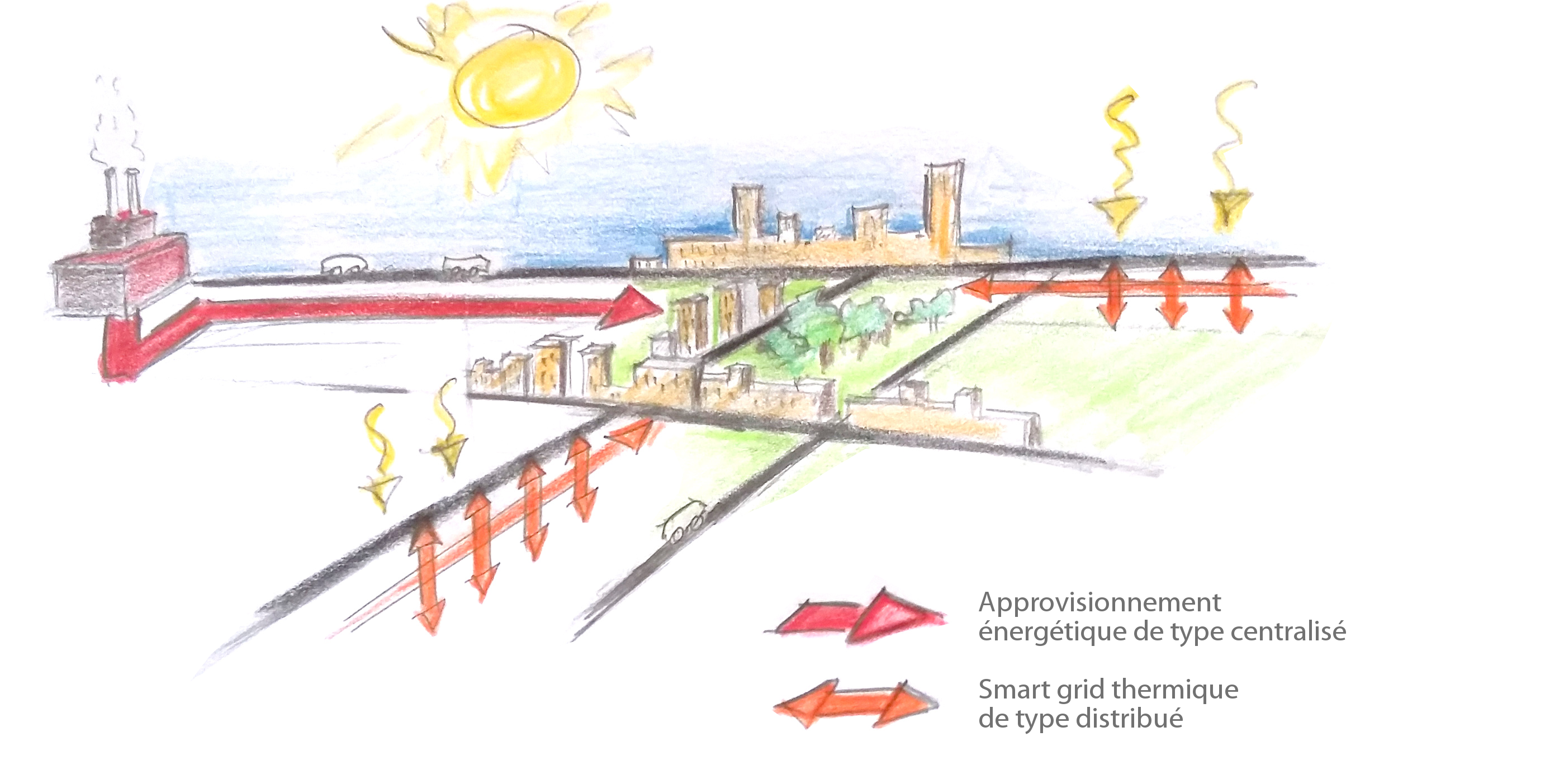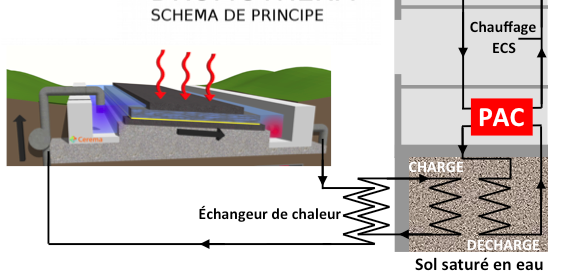the Dromotherm project
 The Dromotherm project, financed by the Pack Ambition Recherche fund of the Auvergne-Rhône-Alpes region over the period 2020 - 2025,
combines research on energy, buildings, roads and connected objects, proposing an operational articulation based on intelligent
energy networks. It aims to develop a lo-fi smart grid to meet the heating needs of buildings, using a “solar thermic” road,
requiring only proven and controlled implementation techniques.
The Dromotherm project, financed by the Pack Ambition Recherche fund of the Auvergne-Rhône-Alpes region over the period 2020 - 2025,
combines research on energy, buildings, roads and connected objects, proposing an operational articulation based on intelligent
energy networks. It aims to develop a lo-fi smart grid to meet the heating needs of buildings, using a “solar thermic” road,
requiring only proven and controlled implementation techniques.
The Dromotherm project focuses on passive buildings and positive energy islands, powered by low-temperature heating networks.
The fatal heat of the roads to power a building ?
The concept developed as part of the Dromotherm project aims to value the energy potential of roads in urban areas by recovering heat captured by pavements during summer periods, storing it in the ground at the base of buildings, and providing for their heating needs during winter periods.
This innovation will also help to reduce the intensity of urban heat islands during heat waves, and
could also be used for road safety purposes by occasionally heating roads in winter, during severe cold periods.

It is very challenging to design a brand new generation of smart grid connecting roads and buildings, replicating the principles of subsurface geothermal networks in urban areas. The latter, using the heat captured by the ground to meet the needs of the building, could thus be applied in cities, whereas it has so far been reserved for the single-family home.
Thanks to the Internet of Things (IoT), the system provides real-time information on powers required by the building and the road, and controls overall energy production and consumption. We are not very far from the philosophy of distributed energy, popularized by Jeremy RIFKIN’s “Third Industrial Revolution”.
Would an energy internet be possible ?
Scale one demonstrators…
Cerema and the Ecole d’application aux métiers des travaux publics (EATP) have developed on the EATP campus in Egletons (Corrèze), a heating pavement demonstrator with a solar energy recovery system. Thanks to the circulation of a heat carrier fluid, this road stores energy in the ground during the summer and releases it during the winter via geothermal heat pumps. Geo-bore surveys were conducted to assess the ability of the rocky ground to recharge itself with heat in summer in order to provide the pavement with the energy it needs in winter to be protected from freezing.
Operational since mid-2015, the demonstrator has been equipped with sensors to characterize meteorology in real time and instrumented geothermal probes.
As part of the Dromotherm project, a second demonstrator will be built on a car park at the University of Savoie Mont Blanc, including a 30 m² dromotherm, a 45 m³ underground thermal storage facility made of saturated gravel and equipped with geothermal baskets, and a 20 m² wooden building positioned on the thermal storage facility.
At the end of the project, the consortium will have sizing tools at its disposal with regard to previously identified use cases (heat supply of a small collective, connection of the dromotherm to a low-temperature heating network, winter viability, etc.). A technical and economic study will position the Dromotherm technology on the various markets related to local energy supply.
Presented at various events on building or energy themes, such as the PEXE Ecotech Days (national network to support business developement in environmental and energy management) or the Drim’In Saclay hackaton, organized by the Essonne Chamber of Commerce and Industry under the sponsorship of Cédric Villani, the Dromotherm technology has aroused the interest of infrastructure and development professionals. The work to come funded by the Ambition Research Pack for the Auvergne-Rhône-Alpes region will help to perfect it.
Dromotherm is a research project of the Tenerrdis competitiveness cluster, led by Cerema in partnership with the Locie laboratory (Laboratory for the Optimisation of Environmental Design and Engineering) of the University of Savoie, the Pascal Institute of the University of Clermont Auvergne and the public works companies Eiffage and Ryb/group Elydan.
